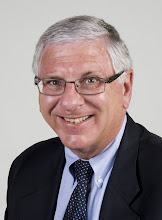Despite limited evidence of long-term success in using opioid pain medications for chronic low back pain, opioid prescribing has increased in recent years for back pain and other non-cancer pain indications. The implications are controversial as published studies provide little evidence indicating which patients will benefit from long-term opioid treatment.
New research, published in The Journal of Pain, identifies predictors of long-term opioid use among patients with chronic back pain caused by lumbar spine conditions. Participants were recruited from 13 spine specialty centers in 11 states and totaled 2,110. Forty-two percent reported using opioids for pain from their spine condition and a third said they take opioids every day.
From their analysis of the demographic, medical and social characteristics of study participants, the researchers found that nonsurgical treatment and smoking independently predicted continued long-term opioid use and pain severity did not. The authors noted that smoking can be a marker for substance abuse disorders, which was not a characteristic evaluated in the sample due to limitations for measuring alcohol or drug use. Therefore, the researchers were unable to consider substance abuse as a predictor of long-term opioid use. However, the association with smoking could be interpreted as a surrogate predictor for substance abuse, given its strong link with smoking.
Regarding the nonsurgical predictor, the authors noted that risks associated with continued pain management with opioids in some patients may outweigh the risks of surgery. This might be a factor worth considering in surgical decision making for patients with herniated discs or stenosis, especially those with a history of substance abuse.
About the American Pain Society_Based in Glenview, Ill., the American Pain Society (APS) is a multidisciplinary community that brings together a diverse group of scientists, clinicians and other professionals to increase the knowledge of pain and transform public policy and clinical practice to reduce pain-related suffering.
APS was founded in 1978 with 510 charter members. From the outset, the group was conceived as a multidisciplinary organization. APS has enjoyed solid growth since its early days and today has approximately 3,200 members. The Board of Directors includes physicians, nurses, psychologists, basic scientists, pharmacists, policy analysts and more.
Friday, January 15, 2010
Subscribe to:
Post Comments (Atom)


No comments:
Post a Comment